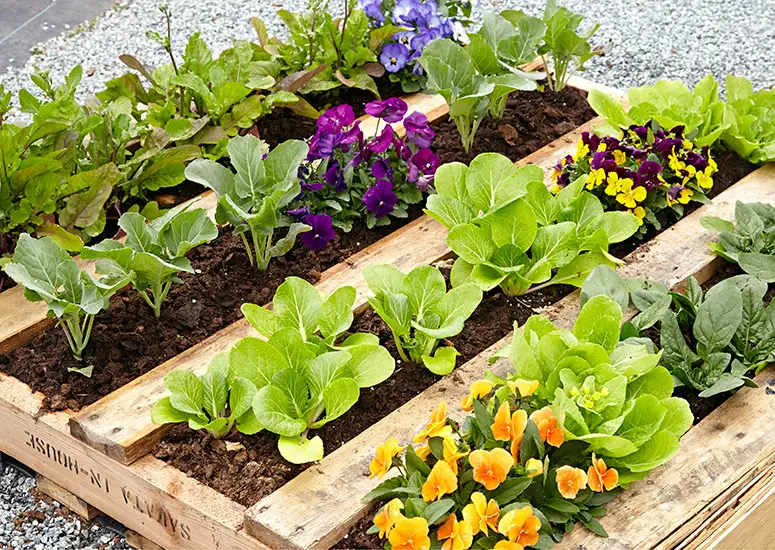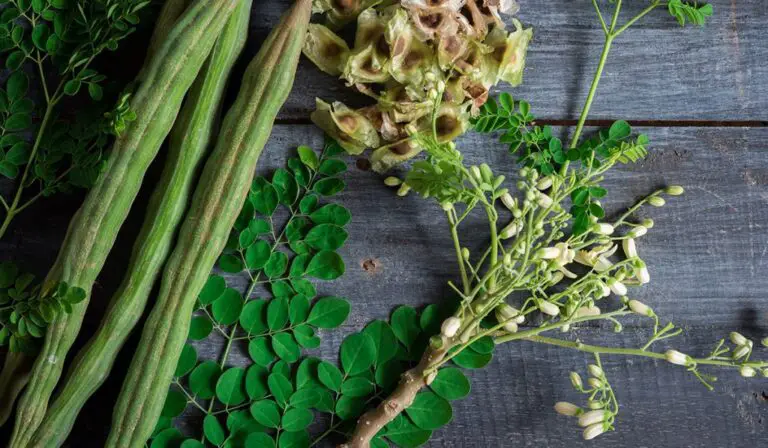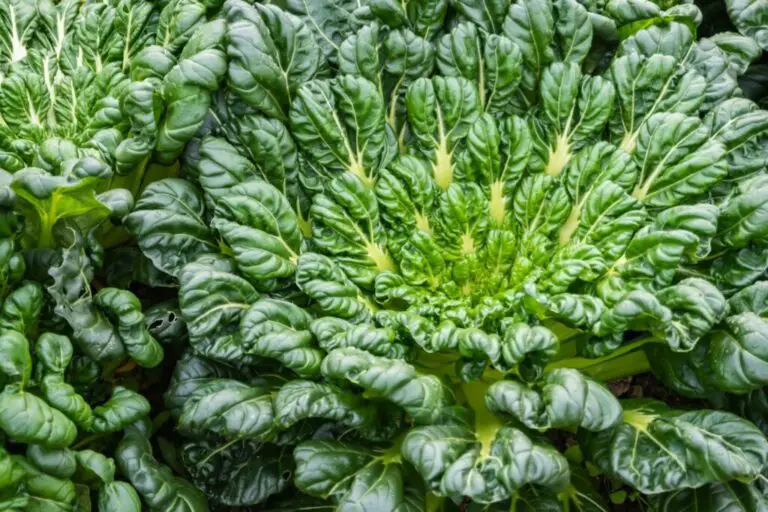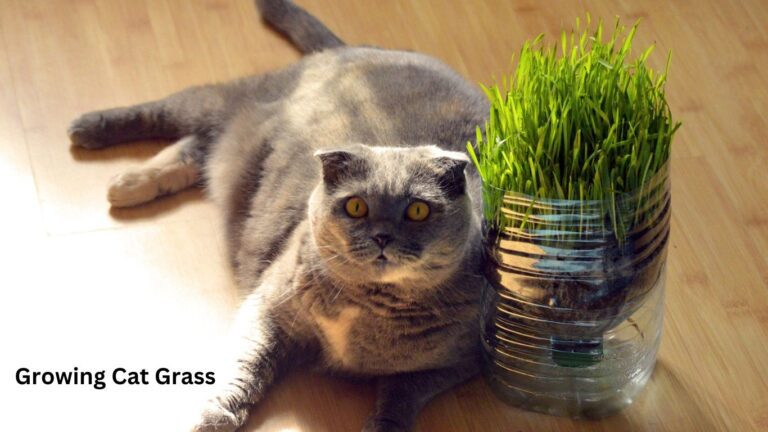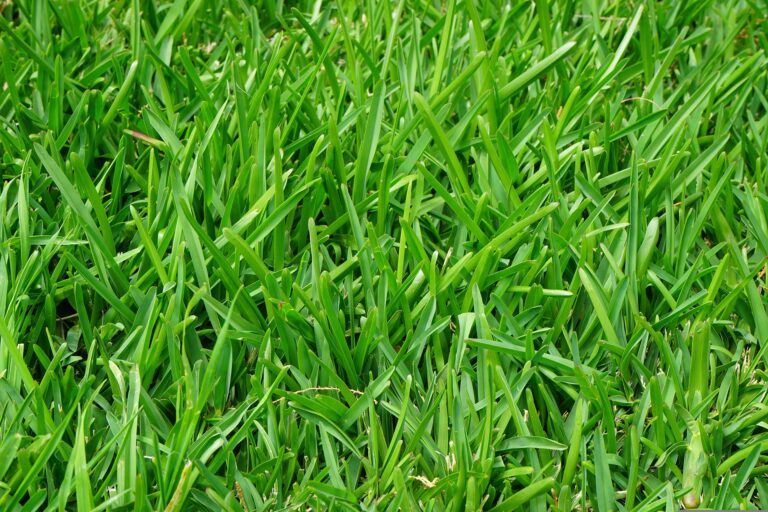How to Make a Pallet Garden: A Step-by-Step Guide to Creating a Beautiful and Sustainable Garden with Pallets
Ever wondered how you can turn something as simple as a pallet into a lush, thriving garden? Well, get ready to be amazed because we’re about to dive into the world of pallet gardening! Did you know that pallet gardening isn’t just a trendy DIY project but also a sustainable way to grow your own food? Whether you’re a seasoned gardener or a newbie with a green thumb, this step-by-step guide will walk you through the process of creating a stunning garden using pallets. From selecting the right pallet to planting your favorite herbs and flowers, we’ve got you covered. So, roll up your sleeves and let’s transform that old pallet into a vibrant garden oasis!
Table of Contents
Planting Techniques for Pallet Gardens: Step-by-step instructions for planting your chosen plants in the pallets
When it comes to planting your chosen plants in pallet gardens, following the right technique can make all the difference in their growth and overall success.
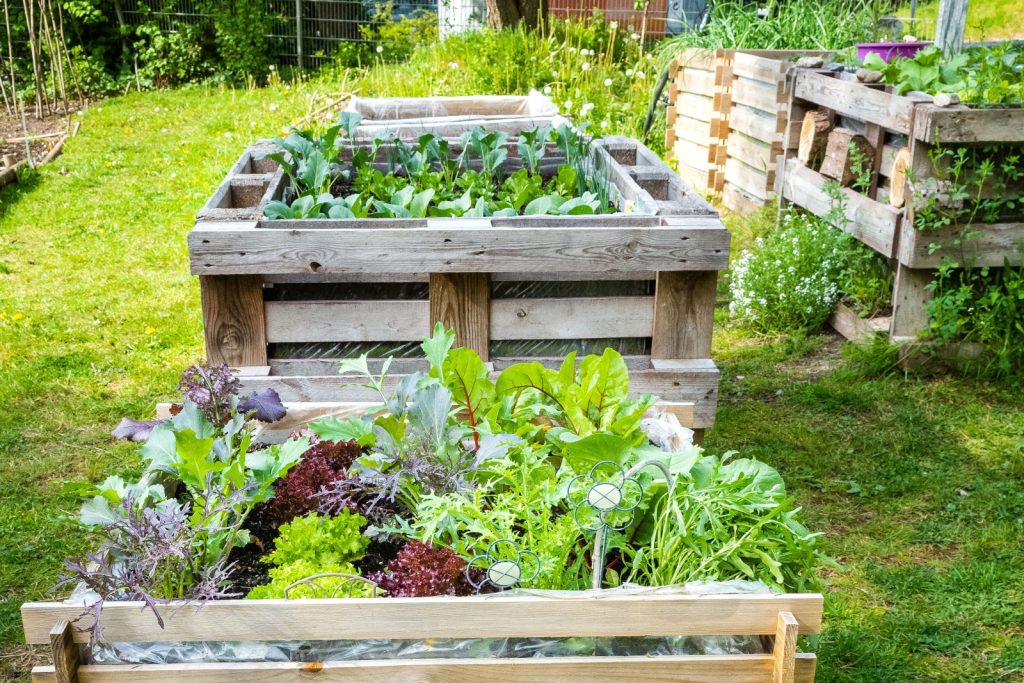
- Prepare the Pallets:
- Clean the pallets thoroughly, removing any dirt, debris, or loose nails.
- Ensure the pallets are in good condition without any rot or damage.
- Line with Landscape Fabric:
- Line the inside of each pallet section with permeable landscape fabric.
- This prevents soil erosion and helps maintain proper drainage.
- Fill with Potting Mix:
- Fill each section with a high-quality potting mix.
- Evenly distribute the soil to provide a stable and nutritious environment for your plants.
- Gently pat down the soil to remove air pockets and create a uniform surface.
- Choose Appropriate Plants:
- Select plants suitable for your specific climate and light conditions.
- Consider factors like sun exposure, temperature, and humidity.
- Arrange the plants in the designated spaces on the pallet.
- Water Thoroughly:
- After placing the plants, water them thoroughly to settle the soil.
- Ensure proper hydration for the plants.
- Avoid overwatering or underwatering; monitor moisture levels.
- Add Mulch:
- Consider adding a layer of mulch to conserve moisture and suppress weeds.
- Mulch also helps regulate soil temperature.
- Regular Care:
- Regularly check the moisture levels in your pallet garden.
- Adjust the watering schedule based on plant needs.
- Provide attentive care to help your plants thrive.
Remember, with proper planting techniques and care, your pallet garden will flourish and create a beautiful display of greenery! 🌱🌿🌼
“Yaheetech’s Raised Garden Bed has transformed my gardening experience. Its elevated design makes gardening tasks such as planting, watering, and harvesting a breeze, eliminating the need for bending or kneeling. The sturdy wood construction ensures durability and stability, providing a reliable gardening solution for outdoor spaces.
However, I found that the shallow depth of the bed may limit the types of plants I can grow, particularly those with deep roots. Additionally, the wooden construction requires regular maintenance to protect against weathering, adding to the overall upkeep. Despite these minor drawbacks, the convenience and versatility of Yaheetech’s Raised Garden Bed make it a worthwhile investment for anyone looking to elevate their gardening game.”
- Elevated Design: Yaheetech’s raised garden bed elevates your gardening experience, providing convenient access for planting, watering, and harvesting without bending or kneeling.
- Durable Construction: Constructed from premium wood, this raised bed offers durability and stability, ensuring long-lasting use in outdoor environments.
- Versatile Use: Suitable for growing a variety of vegetables, herbs, flowers, and plants, this raised garden bed provides flexibility and versatility for gardeners of all skill levels.
- Easy Assembly: With its straightforward assembly process, Yaheetech’s raised garden bed can be quickly and easily set up, allowing you to start gardening in no time.
- Space Optimization: The compact design of this raised bed makes it ideal for small outdoor spaces such as patios, balconies, and decks, maximizing your gardening potential.
- Limited Depth: The shallow depth of the Yaheetech raised garden bed may restrict the types of plants that can be grown, particularly those with deep root systems or extensive growth requirements.
- Wood Maintenance: While the wood construction adds to the aesthetic appeal, it may require regular maintenance such as staining or sealing to protect against weathering and deterioration over time.
- Weight Limitation: Due to its wooden construction, this raised garden bed may have a weight limitation, limiting the amount of soil and plants it can support.
- Initial Cost: The initial cost of purchasing a raised garden bed may be higher compared to traditional in-ground gardening methods, potentially increasing the upfront investment for gardeners.
- Environmental Impact: The production and disposal of wooden garden beds may have environmental implications, prompting eco-conscious consumers to explore alternative materials or gardening methods.
Watering and Maintaining Your Pallet Garden: Essential tips for watering, fertilizing, and caring for your plants to ensure their health and growth
Proper watering and maintenance are essential for ensuring the health and growth of your plants in a pallet garden. When it comes to watering, it’s important to strike a balance so that your plants receive enough moisture without being waterlogged. Remember to check the soil moisture levels regularly by sticking your finger about an inch into the soil. If it feels dry, it’s time to water the plants.
:strip_icc()/watering-vegetable-garden-with-watering-can-f3304023a1704347a5f4fe3f9fe054b8.jpg)
- Optimal Watering Time: Water your pallet garden in the early morning or late afternoon to allow water to penetrate the soil before evaporation occurs due to daytime heat.
- Targeted Watering: Direct water towards the base of the plants to ensure it reaches the roots, reducing the risk of disease and water wastage.
- Selecting Fertilizers: Choose fertilizers based on the specific needs of your plants; organic options like compost or commercial fertilizers tailored to different plant types are suitable choices.
- Regular Inspection: Regularly inspect your pallet garden for signs of pests or diseases to catch issues early.
- Swift Action: Take prompt action if pests or diseases are detected to prevent them from spreading; consider using organic insecticides or fungicides if necessary.
- Pruning for Health: Trim your plants as needed to remove dead or damaged parts and promote healthy growth.
By following these essential tips for watering, fertilizing, and caring for your plants, you’ll create an environment conducive to their health and growth. Stay tuned for the next section where we’ll cover effective strategies for managing pests and diseases in your pallet garden.
Watering and Maintaining Your Pallet Garden: Essential Tips
| Maintenance Aspect | Description |
|---|---|
| 1. Watering Schedule | – Consistent Watering: Establish a regular watering schedule based on the specific needs of your plants. |
| – Monitor Moisture: Check the soil moisture regularly by inserting your finger into the soil. Water when the top inch feels dry. | |
| – Adjust for Seasons: Adapt the watering frequency to seasonal changes and plant growth stages. More water may be needed during hot periods. | |
| 2. Watering Technique | – Deep Watering: Water deeply to encourage deep root growth. Avoid shallow watering that can lead to surface root development. |
| – Avoid Waterlogged Soil: Ensure proper drainage to prevent waterlogging, which can harm plant roots and attract pests. | |
| – Morning Watering: Water in the morning to allow foliage to dry, reducing the risk of fungal diseases. | |
| 3. Fertilization | – Choose Suitable Fertilizer: Select a balanced fertilizer or organic option suitable for the plants in your pallet garden. |
| – Follow Application Guidelines: Apply fertilizers according to the recommended rates on the product label. | |
| – Seasonal Adjustments: Adjust fertilizer applications based on the growing season and plant needs. | |
| 4. Pruning and Trimming | – Regular Inspection: Inspect plants for dead or yellowing leaves, and trim them to encourage healthy growth. |
| – Promote Airflow: Prune overcrowded areas to enhance airflow and reduce the risk of fungal issues. | |
| – Shape and Control Growth: Trim plants to maintain the desired shape and control their overall growth. | |
| 5. Pest and Disease Control | – Monitor Regularly: Keep an eye out for pests and signs of diseases. Early detection allows for prompt intervention. |
| – Natural Remedies: Consider using natural remedies like neem oil or insecticidal soap to control pests and diseases. | |
| – Isolation when Needed: Isolate affected plants to prevent the spread of pests or diseases to the entire pallet garden. | |
| 6. Mulching | – Apply Mulch: Mulch the soil surface with organic materials to retain moisture, suppress weeds, and regulate soil temperature. |
| – Mulch Thickness: Maintain an even layer of mulch, avoiding direct contact with plant stems. | |
| – Top Up as Needed: Add more mulch periodically to replenish and maintain its effectiveness. | |
| 7. Seasonal Considerations | – Winter Protection: Provide protection during colder months, such as covering plants or moving the pallet garden to a sheltered location. |
| – Summer Shade: During intense heat, consider providing shade to prevent heat stress on plants. | |
| – Monitor Microclimates: Be aware of microclimates within the garden that may impact certain plants differently. |
Note: Adapt these tips based on the specific plants in your pallet garden and local climate conditions. Regular observation and responsive care contribute to a thriving and healthy pallet garden.
Managing Pests and Diseases in Your Pallet Garden: Strategies for preventing and dealing with common garden pests and diseases in Garden
Pallet gardens are a creative and efficient way to grow plants in small spaces. However, like any gardening endeavor, they are not immune to pests and diseases. It is crucial to have strategies in place to prevent and deal with common garden threats to ensure the health and productivity of your pallet garden.
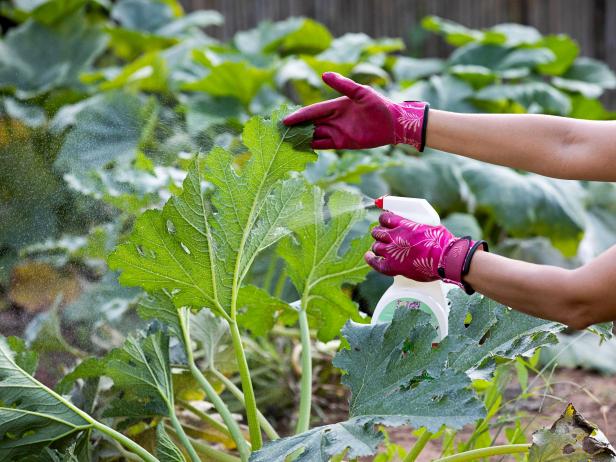
- Good Garden Hygiene:
- Regularly remove dead or decaying plant material .
- Prevents attracting pests and serving as a breeding ground for diseases.
- Clean gardening tools and equipment after each use to avoid pathogen spread.
- Select Disease-Resistant Varieties:
- Consult local garden centers or reputable sources.
- Choose plants with natural resistance to prevalent pests and diseases.
- Minimizes the risk of infestations or infections.
- Early Detection and Action:
- Regularly inspect plants for signs of pest damage or disease symptoms.
- Take immediate action if pests or diseases appear.
- Physically remove pests by hand or use organic pest control methods.
- Disease Identification:
- Identify the specific pathogen causing the issue.
- Visual assessment or plant pathology laboratory diagnosis.
- Implement appropriate measures (e.g., removing infected plants, improving air circulation, applying fungicides).
By implementing these preventive and management strategies, you can effectively prevent and deal with common pests and diseases in your pallet garden. With proper care and attention, your plants will thrive, and you can enjoy the beauty and productivity of your pallet garden throughout the growing season. So get your gardening gloves on and put these strategies into action for a healthy and fruitful pallet garden experience.
Watch video for more information:
FAQ
What are some common garden pests that may affect my pallet garden?
Some common garden pests that may affect your pallet garden include aphids, snails, slugs, caterpillars, and whiteflies.
How can I prevent pests from infesting my pallet garden?
To prevent pests from infesting your pallet garden, you can encourage beneficial insects like ladybugs and lacewings, use organic pest control methods such as neem oil or insecticidal soap, and regularly inspect your plants for any signs of pest infestation.
What are some signs of plant diseases that I should look out for in my pallet garden?
Some signs of plant diseases to look out for in your pallet garden include wilting, yellowing or browning leaves, spots or lesions on the leaves or stems, stunted growth, and mold or fungal growth.
Are there any natural remedies for controlling plant diseases in my pallet garden?
Yes, there are some natural remedies for controlling plant diseases in your pallet garden. For example, you can use a mixture of baking soda and water to control fungal diseases like powdery mildew, or apply a solution of diluted hydrogen peroxide to treat bacterial infections.
How can I prevent diseases from spreading in my pallet garden?
To prevent diseases from spreading in your pallet garden, it is important to practice good sanitation by removing and disposing of any diseased plant material, maintaining proper spacing between plants to allow for good air circulation, and avoiding overwatering, as excess moisture can promote disease development.
Can I use chemical pesticides in my pallet garden to control pests?
While it is possible to use chemical pesticides in your pallet garden to control pests, it is generally not recommended, especially if you plan to consume the plants. Chemical pesticides can have harmful effects on the environment and can also harm beneficial insects.
Is crop rotation necessary in a pallet garden to prevent pests and diseases?
Crop rotation is not necessary in a pallet garden to prevent pests and diseases since the space is limited and plants are often grown in containers. However, it is still beneficial to rotate plant locations within the pallet garden to reduce the risk of recurring pest and disease issues.
Can I use mulch in my pallet garden to prevent pests and diseases?
Yes, you can use mulch in your pallet garden to prevent pests and diseases. Organic mulch, such as straw or wood chips, can help suppress weed growth, retain moisture, and create a barrier that deters pests from reaching your plants.
How often should I inspect my pallet garden for pests and diseases?
It is advisable to inspect your pallet garden for pests and diseases regularly, at least once a week. Early detection is key to preventing infestations and addressing diseases promptly.
Are there any specific plants that are more resistant to pests and diseases in a pallet garden?
Some plants that are generally more resistant to pests and diseases in a pallet garden include herbs like basil, rosemary, and thyme, as well as certain flowers like marigolds and calendula. However, it is important to note that no plant is entirely immune, and proper care and preventive measures are still necessary.

Studied Agricultural Engineering-Plant Protection at University of California, Davis.
Head of Content writing team at Southelmontehydroponics.com

